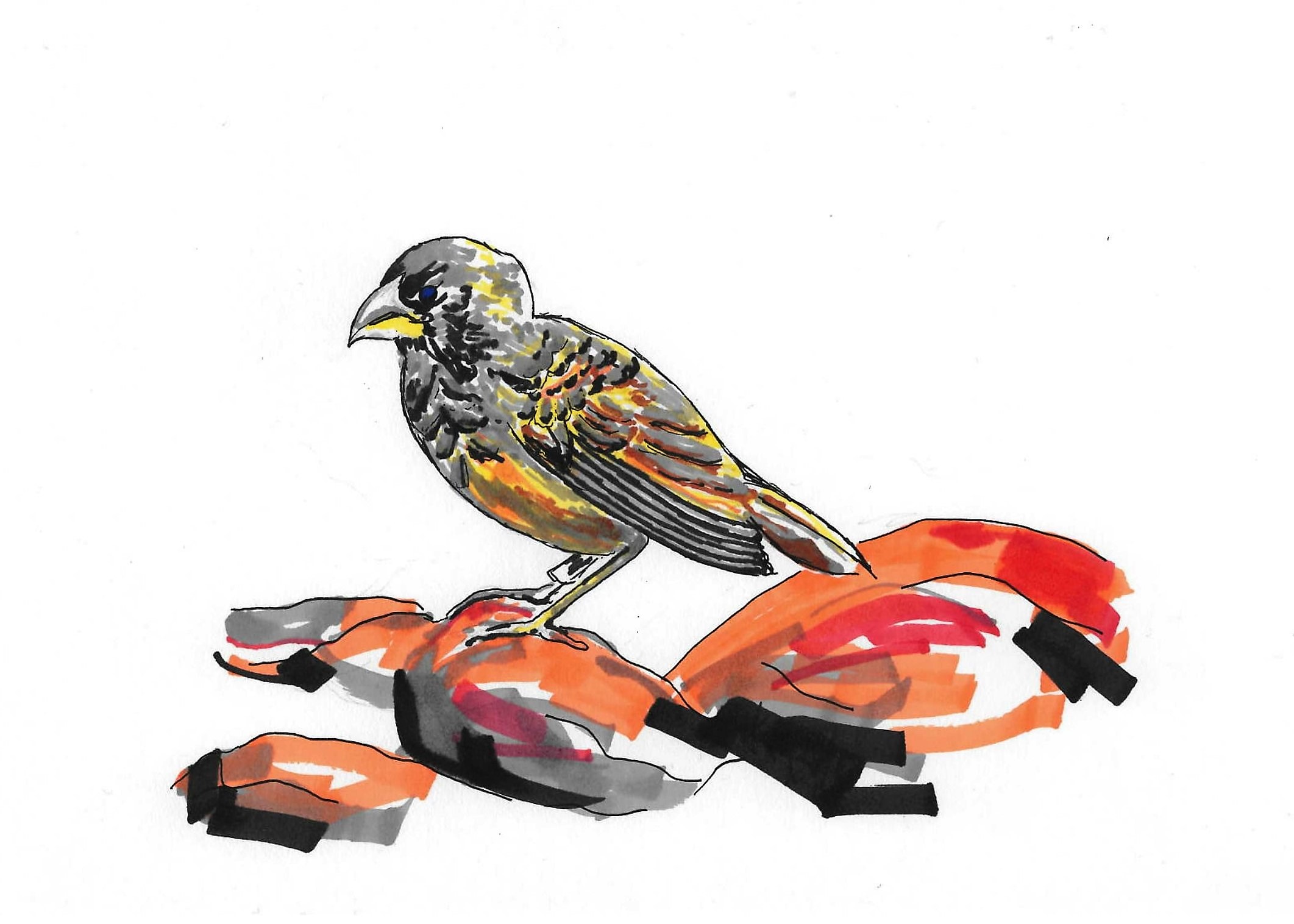The Theory of Evolution via natural selection was first postulated by Charles Darwin in his book ‘On the Origin of Species’ nearly 160 years ago. If you know anything about Charles Darwin apart from this theory, you’ll probably know he sailed around South America on the exploratory voyage of the Beagle. You may also know that when he returned, he brought with him some specimens of the Galapagos finches – now one of the most famous examples of adaptive radiation.
Adaptive radiation is an evolutionary trend which occurs over many thousands of years, during which a colonizing species spreads out across an archipelago or differentiated environment and evolves into many more species – specifically adapted to the new habitats encountered. Adaptive radiation through natural selection has formed many related but morphologically different species of Finches. Although the Finches are dull to look at (in 1793 Captain Colnett said of them “they are not remarkable for their novelty or beauty”) Darwin was struck by their differing beak forms. As he wrote, “seeing this gradation of structure in one small intimately related group, one might really fancy that from an original paucity of birds, one species had been taken and modified for different end”- observing these species was essential to Darwin’s conceptualisation of evolution.
Now in 2017, there is real time, recorded, and proven example of Finch evolution. Evolution in microbes, yeast, and other organisms with short generation times has been recorded for years, but speciation events among vertebrates are relatively undocumented. There are two scientists in particular to credit for this discovery; Peter and Rosemary Grant. They are a husband and wife team who have spent six months of every year since 1973 capturing, tagging, and taking blood samples from finches on the island. They focused their study on Daphne Major, a small, ecologically simplistic island. During their studies, a Large Cactus Finch flew onto the island and successfully mated with a normal inhabitant – a Medium Ground Finch. Quite surprisingly, this mating produced fertile offspring.After many generations, they are now breeding successfully alongside the original species of finches. This random event has led to a distinct new species which has been named Big Bird.
So how did the speciation of Big Bird actually come about? It started with a mixed marriage – that is that the interloper (a Large Cactus Finch) abnormally bred with a female from another species. This may have occurred because he was so far from his own island that he was unable to return. In other words, he was a bit desperate. Importantly the offspring from this match were fertile, but due to combination of gene variance from the parent generation the offspring had a beak morphology that was unique – and a song which isolated them from reproducing with other birds on the island. The speciation incredibly only took two generations to occur. Even though Big Bird has only been around for a few years it is actually behaving like any of the other well-established Finch species. This truly is evolution in action; we had a chance event – the finch mixed marriage, followed by natural selection – and the survival of the new finche against natural barriers. Big Bird has survived because it was able to occupy a free niche in the environment, reducing competition with other finches. It also survived a severe drought. The most recent population figures show there are eight breeding pairs alive.
While observing Big Bird evolve is certainly a phenomenon for science, this kind of event is definitely not rare in nature. The events which caused the speciation of Big Bird are likely the very same which led to the present day situation of 15 different unique Finch species living on the Galapagos archipelago. Watch this space, as there could very easily be a Big Bird 2.







